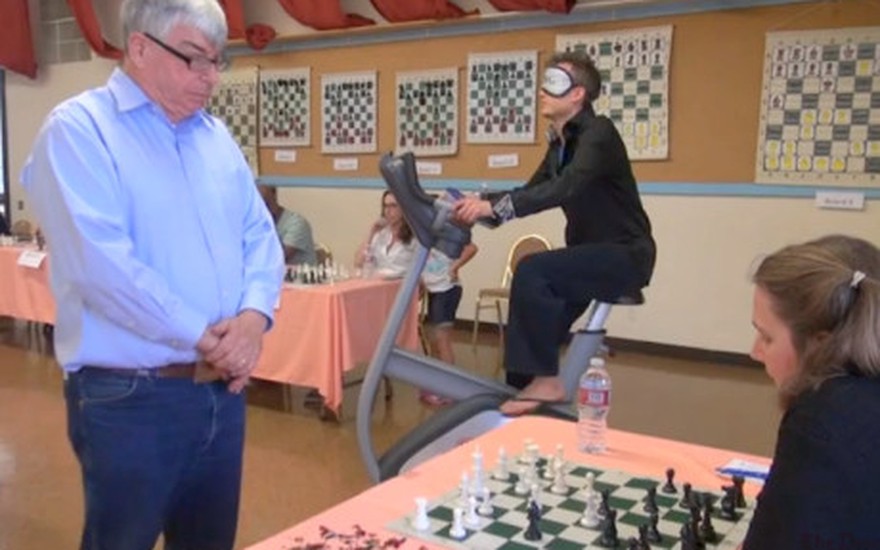
Timur Gareev
Crazyhouse Blindfolded Ideas
Have you ever tried to play Crazyhouse blindfolded on lichess? It is one of the greatest feats you can pull off in online chess and show it to your pro friends. Do not show this to new chess players as they have not discovered Crazyhouse chess and its beauty yet.Have you ever tried to play Crazyhouse blindfolded on lichess?
For those of you who do not know Crazyhouse or ZH here is it in a nutshell. Crazyhouse is a variant where the pieces that you capture of your opponent, get turned into pieces in your army that you can use to drop it on the board, and create endless middlegame chaos.
For those of you who do not know Blindfolded chess, here is it in a nutshell. Blindfold chess is where you do not have the sight of the pieces on the board, or the board itself, and the only way you relay your moves is by speaking out the notation of the move you are going to make or drag a empty square on a empty square on a blank board to create the legal move. Master level players do not have much difficulties in visualising the entire board as they see any chess like position in groups of pieces rather than just a single piece. Blindfold chess is fun to try out both online and offline, and can be played at both fast time formats like hyperbullet and slow time formats like rapid. A very select few people like gsvc, mugwort, opper have tried play the crazyhouse variant blindfold as well, and this is what I will be covering in the article.
The board is blank and as the game progresses you see that you can see the pieces in hand at the right. Some might argue ZH-BLD will be true blindfold if the pocket is not visible, but counting the pieces just gets too hard, and I think it is almost two board worth of information that you have to keep track of.
White does have a significant advantage in ZH, and 1.e4 has been played dominantly until now. So, most of the opening prep for ZHBLD from white will be e4e5 openings or some side-lines of it.
Gaining more positional understanding is important (identifying weaknesses and potential threat mates) to memorise the board. Also calculating mate skill is much more important if you are blindfolded, as you do not want a game that drifts away or the opponent gets a chance to swindle.
Key areas to work to get ZHBLD playing strength almost equal to normal ZH strength can be: 1) Calculating mate
2) Understanding more lines and side-lines in openings
3) Able to memorise ideas and weaknesses and also create them on the board, while keep the track of how much the position might change.
4) Treating each position as new, whenever a move is made.
5) Practising normal chess blindfolded, to make life easier and increase chances of not giving up.
I am planning to continue developing a rulebook for playing ZHBLD for beginners (1800-2200), so that it becomes to try it out early before becoming super strong and trying it out anyways. Stay tuned for my future blog posts where I will cover about blindfold Crazyhouse studies and ideas. Best ways is to get thematic examples, and how the thought process will go when we are blindfolded.
If you are already familiar with blindfold chess and ZH-BLD, I have a new challenge for you.
Crazyhouse Blindfolded 960, it can be tried out at pychess.org, and changing the board settings to invisible pieces and playing Fairy-SF by selecting a challenge of ZH960. There are various ways people approach normal chess 960 blindfolded, where they try to guess the first rank by doing legal moves, or we are knowing apriori about how the configuration is. The added difficulty in this variant is that you do not know the opening sequence that well, so you have to concentrate a lot from the first move itself!
Happy ZH-BLDing!
Do drop a comment if you have ever tried it before or have any experience playing in this format